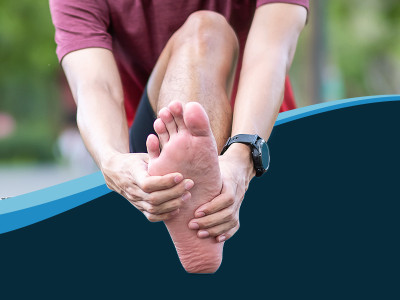Posted by Joe O'Mahony on 9th Jan 2023
Plantar Fasciitis, a common and often debilitating condition causing heel pain, is the focus of todays blog. Join us as we explore the causes of this foot condition, the symptoms associated with it, and the steps you can take to alleviate pain and ensure an effective recovery process.
- What is Plantar Fasciitis?
- Causes of Plantar Fasciitis
- Reducing Symptoms - RICE Recovery
- Reducing Symptoms - Other Methods
- Future Prevention
- Conclusion
What is Plantar Fasciitis?
Plantar Fasciitis is a type of heel pain. Running across the bottom of your foot is a thick band of tissue that connects your heel bone to your toes, known as the Plantar Fascia. Plantar Fasciitis occurs when this band of tissue becomes inflamed. It can be the most painful first thing in the morning, when you take your first steps of the day, causing a stabbing pain in your foot. Although the pain will often decrease the more steps you take, the soreness can easily return if you aren’t using your feet for a while.
Causes of Plantar Fasciitis
Bad Footwear
Wearing improper footwear can contribute to the development of Plantar Fasciitis. Having a flat-foot posture can lead to hyper-mobility in the feet, causing the arch to collapse under the body's weight. This prolonged collapse stretches the Plantar Fascia over time, contributing to the development of Plantar Fasciitis.
Hard Surface Exercise
Hard impact on the heel and ankle (with little cushioning from footwear) can worsen symptoms caused by Plantar Fasciitis. This isn’t exclusive to sports or intense exercise – people who work on their feet for multiple hours at a time also experience Plantar Fasciitis.
Increase in Daily Steps
A sudden increase in your workout intensity or the number of steps (walking or running) that you do can be a contributor to Plantar Fasciitis. This is because the Plantar Fascia becomes overworked and inflamed, which will cause aching and pains around the heel.
There are other factors can increase the likelihood of developing Plantar Fasciitis. Having an existing injury to your heel or calf can result in poor walking posture, which will then put strain on the Plantar Fascia. Being overweight also puts additional stress on your feet/ankles, thus causing symptoms to worsen. Studies show that Plantar Fasciitis is more commonly seen in people aged 40+, as the elasticity of your Plantar Fascia reduces as you get older, making it more vulnerable to injuries. However, anyone of any age can suffer from it.
Reducing Symptoms - RICE Recovery
After the initial injury, you should follow the RICE steps for recovery:
Rest
You should reduce the amount of strain that your ankle / Plantar Fascia is under. This can be done by laying down and resting your foot up above your heart level where possible. Complete immobilisation can cause pain to feel more severe, so we recommend performing gentle stretches and exercise to keep the ankle active without overworking it. Simple exercises you can do include:
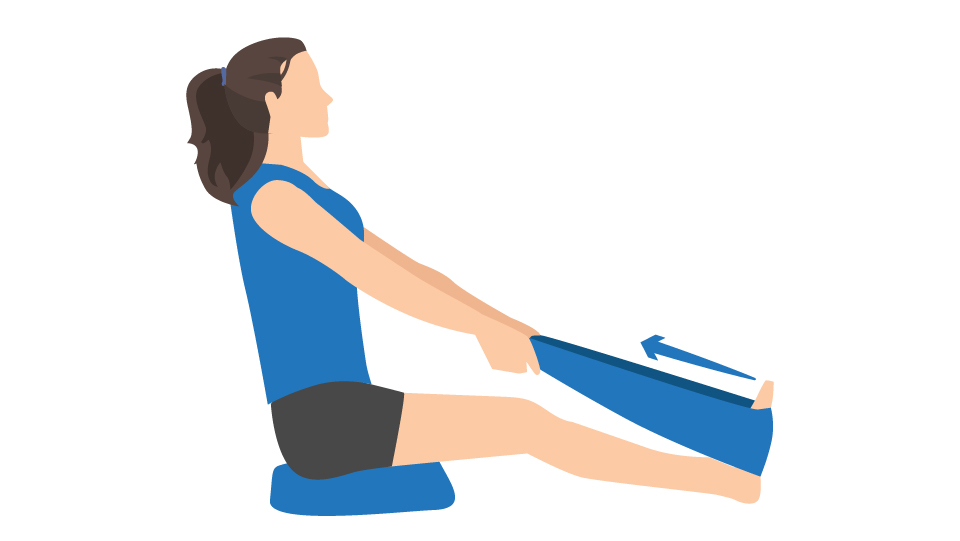
Towel Stretches - Sit on a flat surface with your affected leg extended out in front of you (your body should make an L shape demonstrated below. With a towel (or resistance band) looped around just below your toes, gently pull the towel towards your body while keeping your leg straight. Hold this position for at least 10 seconds, then gently release and repeat two more times.

Bottle Rolls - - Sit on a chair with a bottle or circular can under your affected foot. Slowly roll the bottle out and away from your body using your foot, and try to lift your toes upwards. Afterwards, roll the bottle back towards your body and try to point your toes downwards. This exercise should feel low intensity, and can be done in 10 minute intervals throughout the day.
For more effective pain relief, try filling the bottle up with cold or frozen water for cold therpay on your foot during exercise.
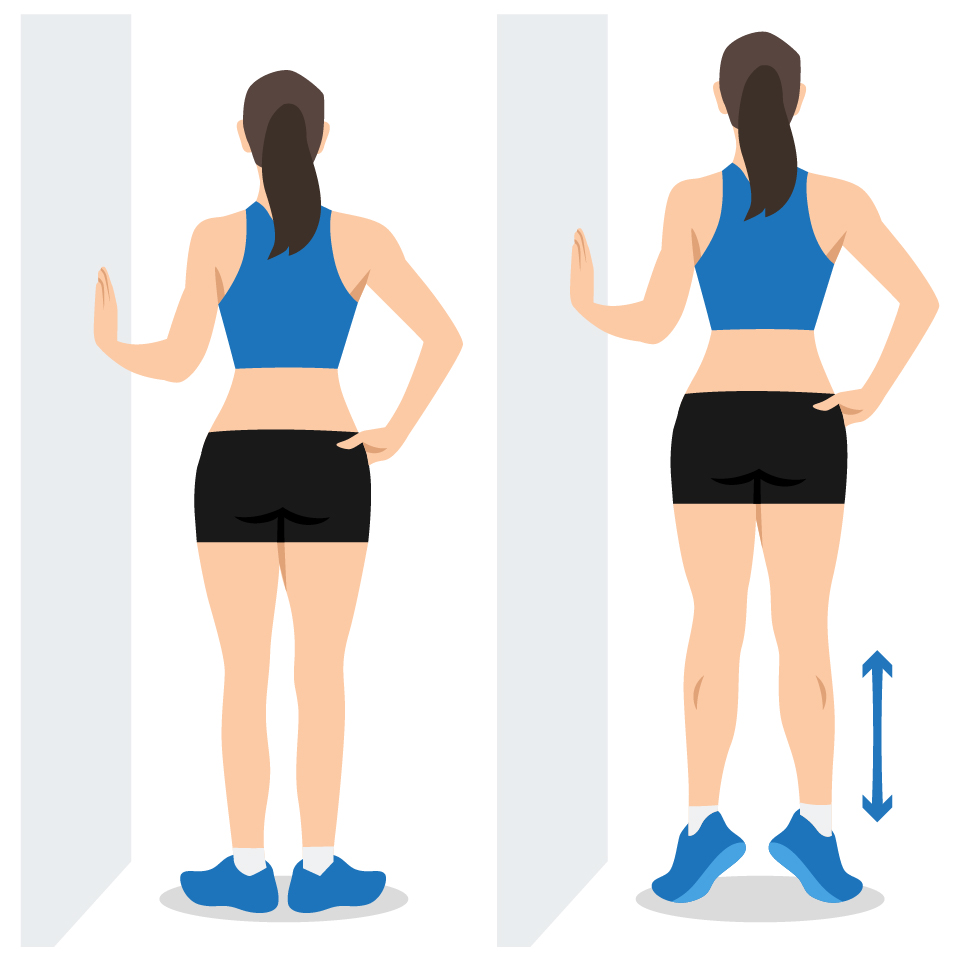
Heel Raises - Stand with your feet flat and evenly spread on the floor (you can do this near a wall or table for balance). Push your heels off the floor into a tiptoe position and hold for few seconds, then slowly lower yourself. Repeat this action for a total of 10 reps.
This exercise should only be done once you feel more confident in your affected foot, and is commonly used to strengthen the Plantar Fascia and Achilles to prevent further injury.
Ice
Ice packs can be applied to areas of good skin and circulation for intervals of 20 minutes every 2 hours. The pack needs to be wrapped in a damp towel to prevent ice burn to the foot, and should be removed every 5 minutes to ensure the foot is has been put on is not numb, tingling or showing signs of poor circulation (blotchy, white/blue coloured skin).
Compression
Compression to the foot can be great for encouraging blood circulation to damaged tendons, providing warmth and oxygen required for recovery. Products such as compression socks can be worn during the initial stages of recovery to relieve pain you may be experiencing overnight, as well as throughout the day and under shoes. For everyday use, we recommend the Actesso Plantar Fasciitis Socks - suitable for men & women and can fit on the left or right foot.
For those who are looking to get back into a sport or exercise, we suggest the Actesso Elastic Ankle Support with Strap. This sleeve has an elasticated strap that wraps around your foot and ankle to provide additional compression and support, encouraging circulation and reducing the likelihood of further injury.
Looking for discreet support that you can put on and forget about? We recommend Silicone Pad Heel Protectors. Available in a pair and easily washable for long term use, these gel heel protectors are great for dispersing the amount of pressure put on the heel to the rest of the foot to reduce the chance of developing Plantar Fasciitis. The soft silicone material also makes these pads suitable repairing cracked heels.
The compression stage should only be implemented once any swelling has gone down, and you begin to walk more on your foot again. Applying compression too soon can cause more pain from inflammation and increases the amount of time it will take to make a full recovery.
Elevation
As mentioned earlier, elevating the ankle above your heart level can help to reduce inflammation around the ankle.
Reducing Symptoms - Other Methods
Painkillers
After talking to a pharmacist, they may recommend which painkillers you should take for Plantar Fasciitis based off the severity of your experience. The NHS website recommends taking painkillers such as paracetamol or ibuprofen.
Arched Footwear
Wearing flat shoes such as plimsols or flip flops will not help alleviate symptoms of Plantar Fasciitis – you should wear trainers with cushioned soles and good arch support when walking around the house and small trips (for the gentle exercises you should be barefoot).
Future Prevention
Once you have successfully recovered from Plantar Fasciitis, it is important that you continue taking conscious actions to prevent developing it again. The exercises mentioned earlier can be done post-injury to strengthen the foot and calf – especially the heel raise exercise.
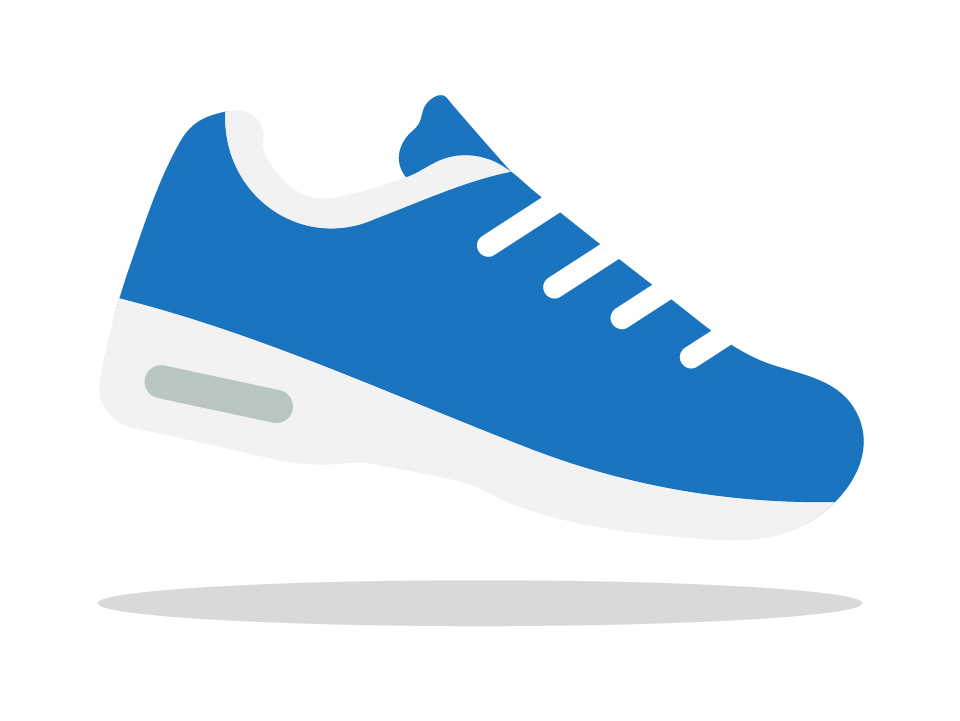
Suitable Footwear
One of the main causes of Plantar Fasciitis is poor footwear choice. You should look for shoes suitable for the activity you are doing. For everyday use, try finding shoes with arch support and cushioned soles to help absorb impact whilst walking.
You can also buy insoles to put into existing shoes that will mould to the shape of your foot. This or the Actesso Heel Pad Protectors are great cost-effective ways to make your footwear more comfortable and supportive.

Weight Loss
Being overweight puts additional strain on joints and tendons when walking or doing exercise. By losing weight, your body is under less strain meaning you are less likely to injure yourself during physical activities.

Daily Warm Ups
Suddenly going into exercise without proper stretching and warm ups can be a shock to the muscular system, and is when you are most likely to injure yourself. Getting into the habit of stretching your muscles out and gradually increasing intensity is how you can prevent damaging tendons– this advice is applicable to Plantar Fasciitis and any sporting muscular injury.

Change of Sports
If you notice that you regularly experience symptoms of Plantar Fasciitis after the form of exercise you do, it could be that you are vulnerable to Plantar Fasciitis and that form of exercise is not suitable for you. One of the best sports that is low impact on your ankle is swimming – the versatility allows you to choose a stroke that has no use of the ankles, or a stroke that gently strengthens your ankles.
You may also choose to cycle to places instead of walking, as cycling provides a mode of transport with very little impact on joints.
Conclusion
Plantar Fasciitis can affect anyone, and if left untreated symptoms can last for several months. By following the steps mentioned in this blog, we hope you will experience a pain-free and effective recovery. For more information on the supports we sell for Plantar fasciitis, contact us at info@actesso.co.uk or visit the following pages:
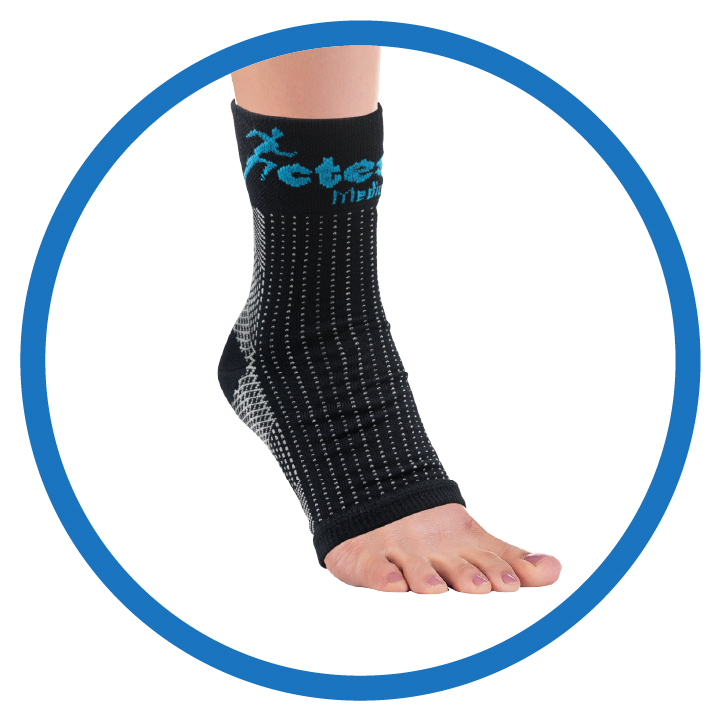
|
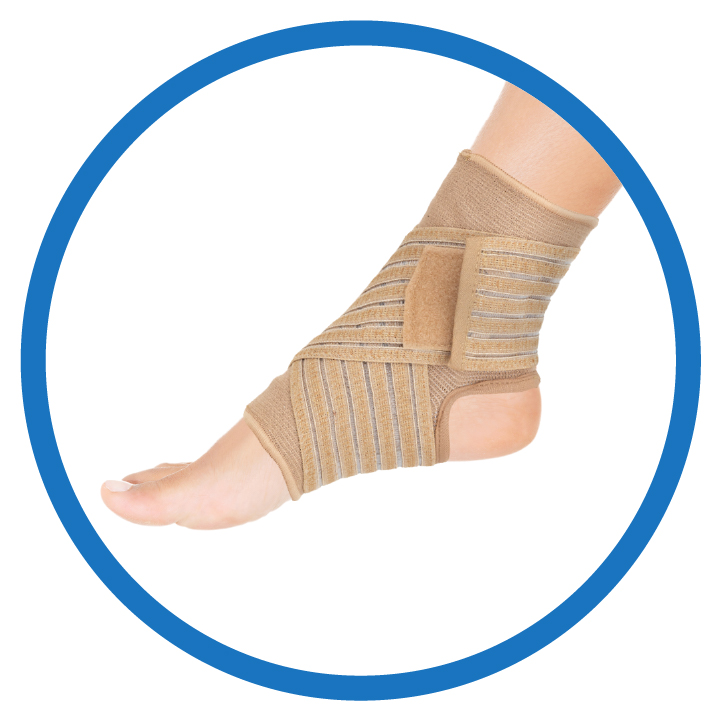
|
|
Disclaimer: We are not qualified medical professionals. All information stated from this article has been taken from reputable sources.
